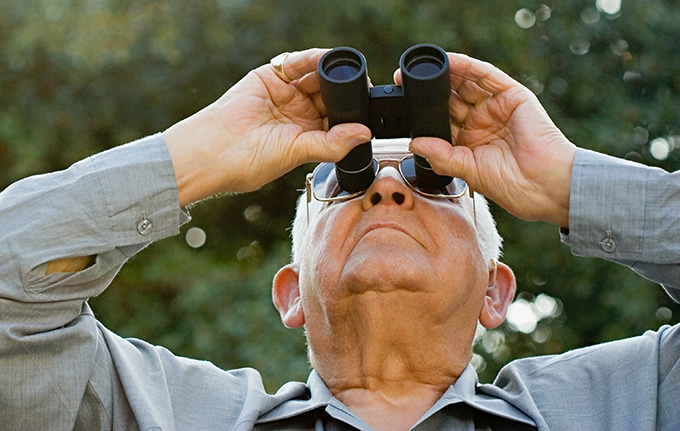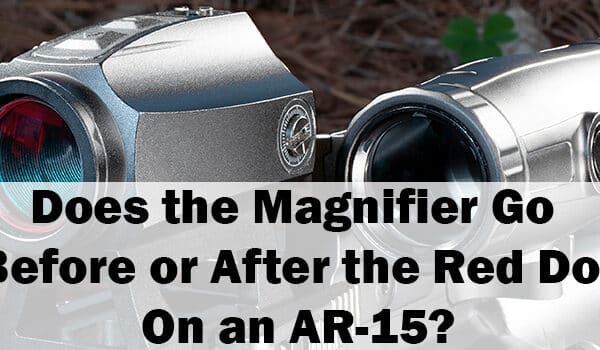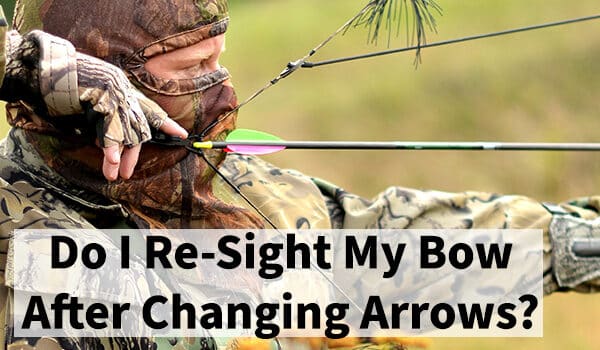Understanding Different Binocular Features
It’s important to have reliable and high-quality equipment in the field. A good pair of binoculars can make all the difference in outdoor activities such as hunting, birdwatching, or surveillance. This blog post will guide you through the essential aspects to consider when comparing and provide tips for purchasing binoculars. From magnification and objective lens diameter to prism types and coatings, we’ll cover everything you need to know to make an informed decision.
Table of contents
Understanding the Basics
Magnification and Objective Lens Diameter
Magnification and objective lens diameter are crucial to understanding when choosing binoculars. The first number in the binocular’s description represents its magnification power, while the second refers to the diameter of the objective lenses in millimeters. For instance, in a pair of binoculars labeled as “8×42,” the magnification is 8x, and the objective lens diameter is 42mm.

It’s important to strike a balance between magnification and lens diameter. Higher magnification provides a closer view but can lead to a narrower field of view and shakier image stability. On the other hand, larger objective lenses allow more light to enter, resulting in brighter images, especially in low-light conditions. However, they also make the binoculars heavier and bulkier.
Consider your needs and preferences when deciding the ideal magnification and objective lens diameter for your activities.
Understanding Prism Types
Roof Prism vs. Porro Prism
Binoculars use prisms to correct the inverted image created by the objective lenses. There are two common prism types: roof prism and Porro prism.
- Roof Prism: Roof prism binoculars are known for their sleek and compact design. They have straight barrels, making them more ergonomic and easy to handle. These binoculars are ideal for outdoor enthusiasts who value portability and durability.
- Porro Prism: Porro prism binoculars have an offset barrel design, which provides a wider separation between the objective lenses. This results in better depth perception and a wider field of view. Porro prism binoculars are often more affordable than roof prism models, making them an excellent choice for beginners.


Consider the advantages and disadvantages of each prism type based on your preferences and budget before deciding.
Lens Coatings and Image Quality
Coated, Fully Coated, Multi-Coated, and Fully Multi-Coated Lenses
Lens coatings play a vital role in determining the image quality binoculars produce. The type of coating affects light transmission, brightness, and contrast. Here are the common lens coating types:
- Coated Lenses: Binoculars with coated lenses have a single layer of anti-reflective coating on at least one lens surface. This helps reduce glare and improve light transmission.
- Fully Coated Lenses: Binoculars with fully coated lenses have anti-reflective coatings on all air-to-glass surfaces. These coatings enhance brightness and image clarity.
- Multi-Coated Lenses: Binoculars with multi-coated lenses have multiple layers of anti-reflective coatings on one or more lens surfaces. These coatings further enhance light transmission and minimize reflections.
- Fully Multi-Coated Lenses: Binoculars with fully multi-coated lenses have multiple layers of anti-reflective coatings on all air-to-glass surfaces. They offer the highest level of light transmission, resulting in excellent image quality.

When considering binoculars, prioritize models with fully multi-coated lenses for superior image clarity and brightness.
Additional Features and Consider
Field of View and Eye Relief
- Field of View: The field of view (FOV) refers to the width of the observable area when looking through the binoculars. It is usually expressed as the width of the view at a specific distance (e.g., 1000 yards). A wider field of view allows you to see more of the scene without constantly moving your binoculars. Consider your specific activity, such as birdwatching or hunting, and choose binoculars with an appropriate FOV for optimal viewing experience.
- Eye Relief: Eye relief is the distance between the eyepiece and your eye at which you can still see the entire field. This is particularly important for eyeglass wearers who need enough distance to comfortably fit their glasses between their eyes and the binoculars. Look for binoculars with longer eye relief if you wear glasses to ensure a full view without compromising comfort.

In addition to lens coatings, binoculars may feature prism coatings, enhancing light transmission and overall image quality. The common prism coating types include:
Prism Coatings
- Silver Coating: Silver coatings are applied to the reflective surfaces of prisms, helping to increase light reflection and transmission. Binoculars with silver-coated prisms are generally more affordable but may not provide the same level of image quality as higher-end coatings.
- Phase Correction Coating: Phase correction coatings are applied to roof prisms to correct the phase shift caused by the prism design, resulting in improved contrast and resolution. These coatings are especially important for birdwatchers and those who require precise image detail.
- Dielectric Coating: Dielectric coatings are high-end prism coatings that provide superior light transmission. They are typically found in premium binoculars and offer excellent image brightness, clarity, and color fidelity.
Consider the prism coatings with lens coatings to ensure optimal light transmission and image quality.
Focus System and Durability
- Focus System: Binoculars generally come with two focus systems: center focus and individual eyepiece focus.
- Center Focus: Binoculars with a center focus system have a single focus wheel that adjusts both eyepieces simultaneously. This allows for quick and easy focusing on objects at various distances.
- Individual Eyepiece Focus: Binoculars with individual eyepiece focus require adjusting each eyepiece separately to achieve focus. While this system offers more precise focusing control, it can be time-consuming and less convenient, especially when observing fast-moving subjects. Another consideration would be BiFocal LASIK. I have bifocal Lasik, meaning I use 1 eye for distance and 1 for reading; individual eyepiece focus makes this easier.
- Durability: Consider the build quality and durability of the binoculars, especially if you plan to use them in rugged environments. Look for models with sturdy construction, waterproofing, and shock resistance to withstand the elements and accidental drops.
Choosing the Right Binoculars for Your Needs
Now that you are familiar with the key aspects of binoculars, it’s time to narrow down your choices based on your specific needs:



- Determine your primary activity: Identify the main purpose for which you will be using the binoculars, whether it’s hunting, birdwatching, wildlife observation, or surveillance. Different activities may require specific features, such as a wider field of view or higher magnification.
- Consider your budget: Set a realistic budget and look for binoculars that offer the best value within that range. Remember, while higher-priced models often provide better optical performance, there are affordable options that can still meet your needs.
- Try before you buy: If possible, visit a store and try out different binocular models. Pay attention to the ergonomics, weight, and ease of use of the binoculars. Make sure they feel comfortable in your hands and that you can easily adjust the focus.
- Read reviews and seek recommendations: Research online reviews from reputable sources and seek recommendations from experienced users or professionals in your field of interest. Their insights can provide valuable information and help you make an informed decision.
- Warranty and customer support: Check the warranty offered by the manufacturer. A longer warranty period indicates the manufacturer’s confidence in their product. Additionally, ensure that the company provides reliable customer support if you encounter any issues or need assistance.
Tips for Purchasing Binoculars Final Thoughts
Choosing the right binoculars requires considering various factors, such as magnification, objective lens diameter, prism type, lens coatings, field of view, eye relief, focus system, and additional features. By understanding your specific needs and preferences, you can make an informed decision and select binoculars that enhance your outdoor experiences. Remember to balance factors like image quality,

Purchasing binoculars is an investment in enhancing outdoor experiences and optimizing visual capabilities. By understanding the key aspects, you can make a well-informed decision that aligns with your specific needs and preferences. Remember to prioritize image quality, durability, and comfort when selecting binoculars. Consider trying them out in person, if possible, and rely on reviews and recommendations to gain insights from other users.
With the right pair of binoculars, you can enjoy breathtaking views, spot wildlife with precision, and enhance your overall outdoor adventures. Happy exploring!
Tips for Purchasing Binoculars FAQs
The ideal magnification depends on your specific activities. For general-purpose use, a magnification of 7x to 10x is often recommended. Higher magnifications, such as 12x or 15x, provide a closer view but may sacrifice image stability. Consider the balance between magnification and image steadiness based on your intended use.
The objective lens diameter determines how much light the binoculars can gather. A larger diameter allows more light to enter, resulting in brighter images, especially in low-light conditions. However, larger objective lenses also increase the weight and size of the binoculars. Consider your preferences for brightness versus portability when choosing the objective lens diameter.
Both roof prism and Porro prism binoculars have their advantages. Roof prism binoculars are more compact and ergonomic, making them suitable for mobility activities. Porro prism binoculars, on the other hand, provide a wider field of view and are often more affordable. Consider your specific needs regarding portability, field of view, and budget to decide between the two.
Lens coatings enhance light transmission, image brightness, and contrast. Look for binoculars with multi-coated or fully multi-coated lenses for optimal image quality. These coatings minimize reflections and improve overall clarity. While coated and fully coated lenses offer some improvement, the highest quality coatings are found in fully multi-coated models.
The choice between center focus and individual eyepiece focus depends on your preferences and needs. Center focus systems allow quick and easy focusing on objects at different distances, while individual eyepiece focus provides more precise control. Consider the convenience, speed, and precision required for your activities when deciding on the focus system.



